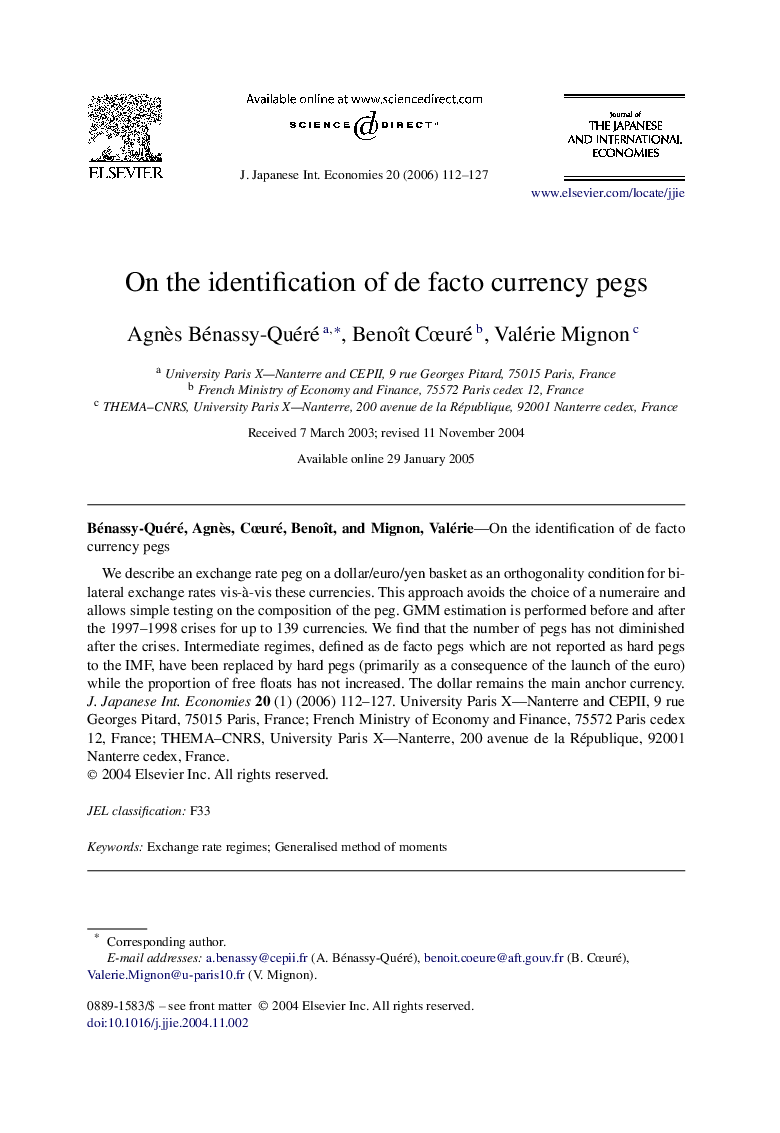| Article ID | Journal | Published Year | Pages | File Type |
|---|---|---|---|---|
| 964637 | Journal of the Japanese and International Economies | 2006 | 16 Pages |
Abstract
We describe an exchange rate peg on a dollar/euro/yen basket as an orthogonality condition for bilateral exchange rates vis-à-vis these currencies. This approach avoids the choice of a numeraire and allows simple testing on the composition of the peg. GMM estimation is performed before and after the 1997–1998 crises for up to 139 currencies. We find that the number of pegs has not diminished after the crises. Intermediate regimes, defined as de facto pegs which are not reported as hard pegs to the IMF, have been replaced by hard pegs (primarily as a consequence of the launch of the euro) while the proportion of free floats has not increased. The dollar remains the main anchor currency. J. Japanese Int. Economies20 (1) (2006) 112–127.
Keywords
Related Topics
Social Sciences and Humanities
Economics, Econometrics and Finance
Economics and Econometrics
Authors
Agnès Bénassy-Quéré, Benoît Cœuré, Valérie Mignon,
